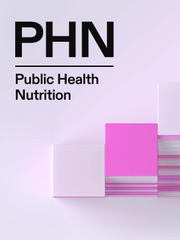Madam
Burrows et al.( Reference Burrows, Correa-Burrows and Reyes 1 ) conducted a cross-sectional study to investigate the association between metabolic syndrome (MetS) and several cardiometabolic risk factors in 667 healthy adolescents. The authors defined insulin resistance as a homeostatic model assessment–insulin resistance index (HOMA-IR) of ≥2·6, and relative sarcopenia as values of the fat-free mass index, determined by dual-energy X-ray absorptiometry, in the lowest quartile. Using a multivariate logistic regression model, they determined that the OR (95 % CI) of insulin resistance and relative sarcopenia for MetS were 3·7 (1·2, 10·8) and 21·2 (4·2, 107·5) in males, and 4·9 (1·9, 12·6) and 3·6 (1·1, 11·9) in females, respectively. I have three queries on their study.
First, the authors mentioned that there was no gender difference in the association between insulin resistance and MetS in adolescents. In contrast, Kim et al. reported that insulin resistance was independently associated with MetS only among girls by using the data from the Korea National Health Nutrition Examination Survey( Reference Kim, Lee and Kwon 2 ). The definition of insulin resistance differs in the two studies, and further studies are needed to evaluate the possibility of a gender difference on the association by considering ethnicity.
Second, Adair et al.( Reference Adair, Gordon-Larsen and Du 3 ) reported the existence of an association between diet, obesity, physical activity and cardiometabolic risk factors, and described the existence of gender differences in the association between insulin resistance and physical activity or protein intake. Their report expresses the significance of lifestyle factors as confounders of the association between insulin resistance and cardiometabolic risk. Burrows et al.( Reference Burrows, Correa-Burrows and Reyes 1 ) also reported that physical inactivity was significantly associated with MetS, with an OR (95 % CI) of 2·94 (1·12, 7·72) in males. In contrast, there was no significant association between physical inactivity and MetS in females. As the same statistical result was obtained for obesity, with a significant association with MetS only in males, Burrows et al. should mention that some lifestyle factors showed gender differences in their association with MetS.
Finally, a wide 95 % CI for the OR relating sarcopenia to MetS was observed in males. I suppose that the instability of the estimate was due to the limited number of males with MetS or relative sarcopenia among the males in their study. Although statistical significance was observed, I recommend Burrows et al. reconfirm the outcome in a further study.
Acknowledgements
Conflict of interest: None declared.



